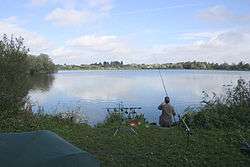Clairmarais
| Clairmarais | ||
|---|---|---|
| Commune | ||
 Romelaëre nature reserve | ||
| ||
 Clairmarais Location within Hauts-de-France region  Clairmarais | ||
| Coordinates: 50°46′27″N 2°18′03″E / 50.7742°N 2.3008°ECoordinates: 50°46′27″N 2°18′03″E / 50.7742°N 2.3008°E | ||
| Country | France | |
| Region | Hauts-de-France | |
| Department | Pas-de-Calais | |
| Arrondissement | Saint-Omer | |
| Canton | Saint-Omer | |
| Intercommunality | Pays de Saint-Omer | |
| Government | ||
| • Mayor (2001–2008) | Nicole Heneman | |
| Area1 | 18.02 km2 (6.96 sq mi) | |
| Population (1999)2 | 689 | |
| • Density | 38/km2 (99/sq mi) | |
| Time zone | UTC+1 (CET) | |
| • Summer (DST) | UTC+2 (CEST) | |
| INSEE/Postal code | 62225 /62500 | |
| Elevation |
1–34 m (3.3–111.5 ft) (avg. 9 m or 30 ft) | |
|
1 French Land Register data, which excludes lakes, ponds, glaciers > 1 km2 (0.386 sq mi or 247 acres) and river estuaries. 2 Population without double counting: residents of multiple communes (e.g., students and military personnel) only counted once. | ||
Clairmarais is a commune in the Pas-de-Calais department in the Hauts-de-France region of France.
Geography
A farming village situated in reclaimed marshland, 2 miles (3 km) northeast of Saint-Omer, on the D209 road. The Neufosse Canal, which connects the Aa and Lys Rivers, passes by the commune.
Population
| Year | 1962 | 1968 | 1975 | 1982 | 1990 | 1999 |
|---|---|---|---|---|---|---|
| Population | 397 | 410 | 480 | 598 | 687 | 689 |
| From the year 1962 on: No double counting—residents of multiple communes (e.g. students and military personnel) are counted only once. | ||||||
History

It owes its origin to the famous Cistercian abbey founded by St. Bernard in 1140.
He gave the village the name of Claromarisco (later to be Clarus Mariscus and then Clermarez) because of the huge marshes and many rivers in the vicinity. The Dutch Klaarmares and West Flemish Cleremeersch names reflect the nature of the terrain, too.
Clairmarais became a fully-fledged common in 1790 when the abbey was going to be destroyed and sold as a national asset during the French Revolution.
Places of interest
- The church of St.Bernard, dating from the nineteenth century.
- A windmill.
- Vestiges of the 13th century abbey including the remains of the entrance to the abbey with gatehouse buildings, a chapel and dovecote.
- The eighteenth century Cistercian farm of Cloquette.
- The cave of Notre-Dame de Lourdes which is host to a pilgrimage on August 15. It is the largest in France, north of the Seine.
- The National nature reserve of Romelaëre.[1]
See also
References
- ↑ JO; Decree No. 2008-220 of 5 March 2008 covering creation of the national nature reserve "Romelaëre Lakes" Nord and Pas-de-Calais
External links
| Wikimedia Commons has media related to Clairmarais. |
- A Clairmarais website (in French)
- Another Clairmarais website (in French)
- Clairmarais on the Quid website (in French)
